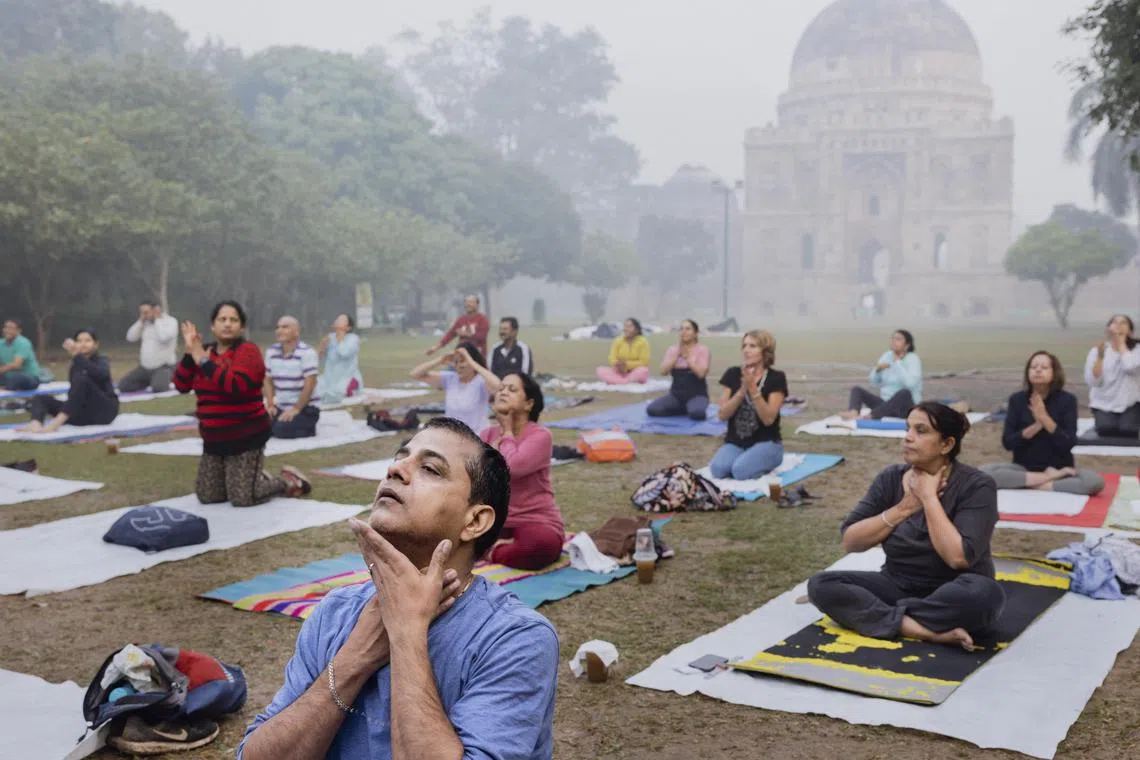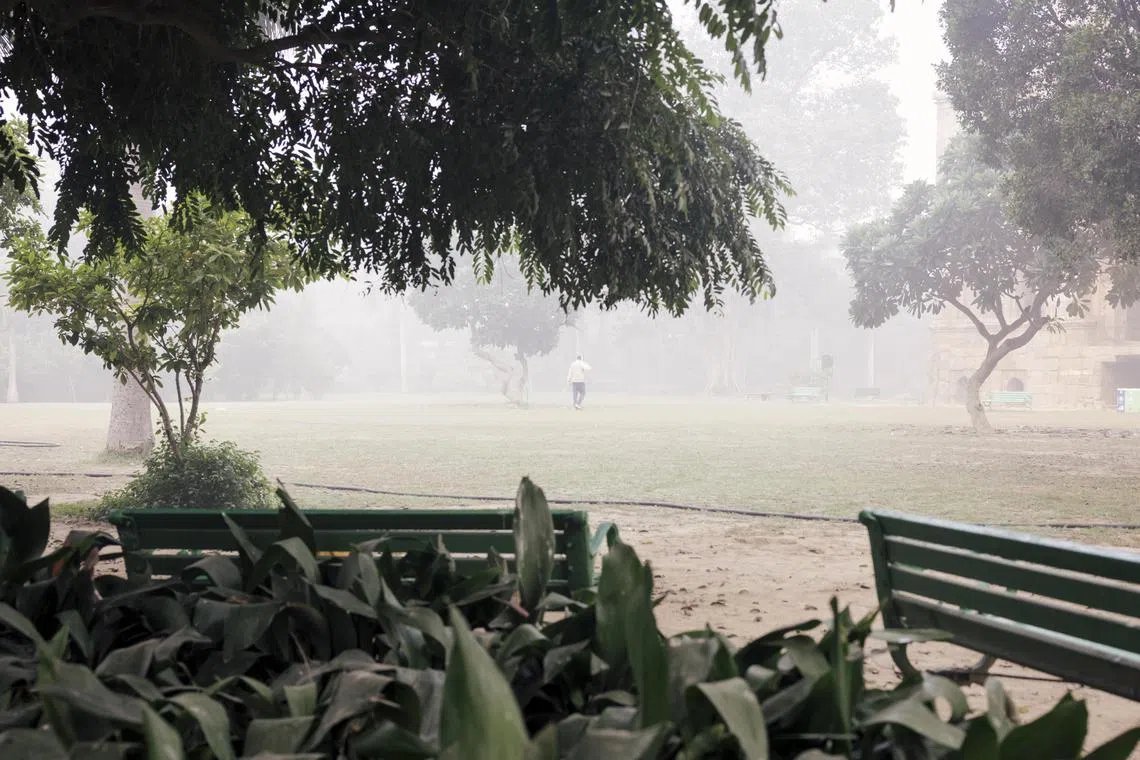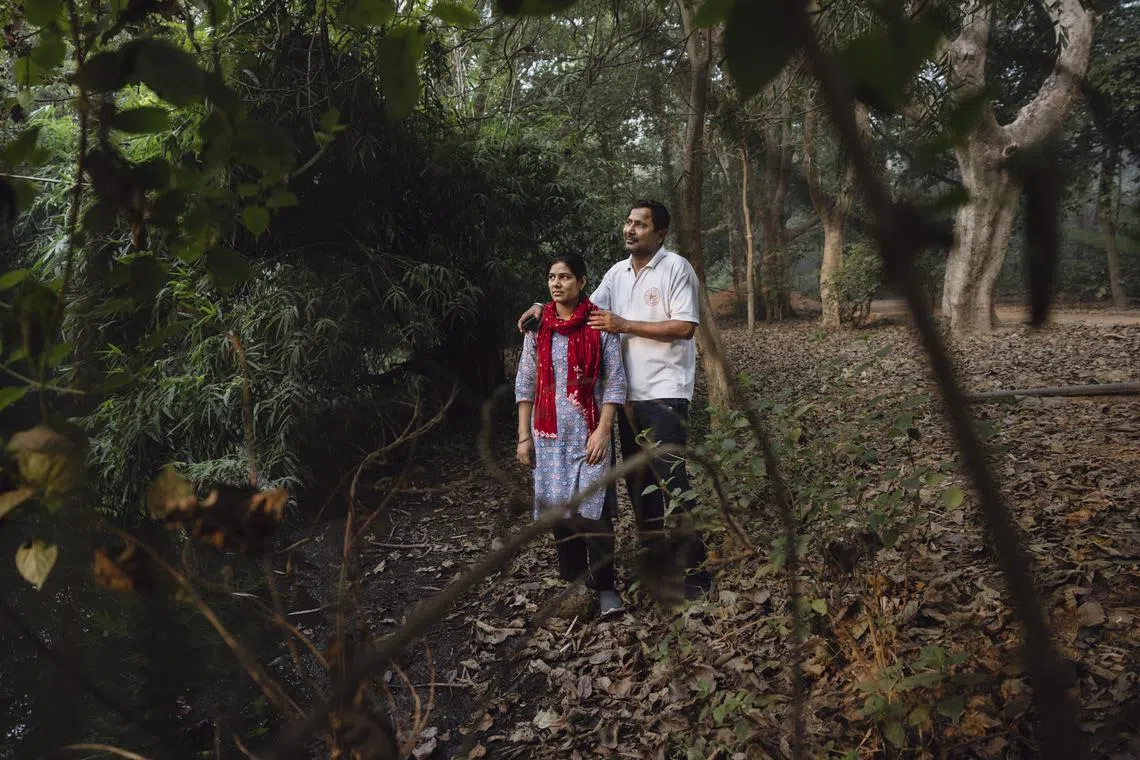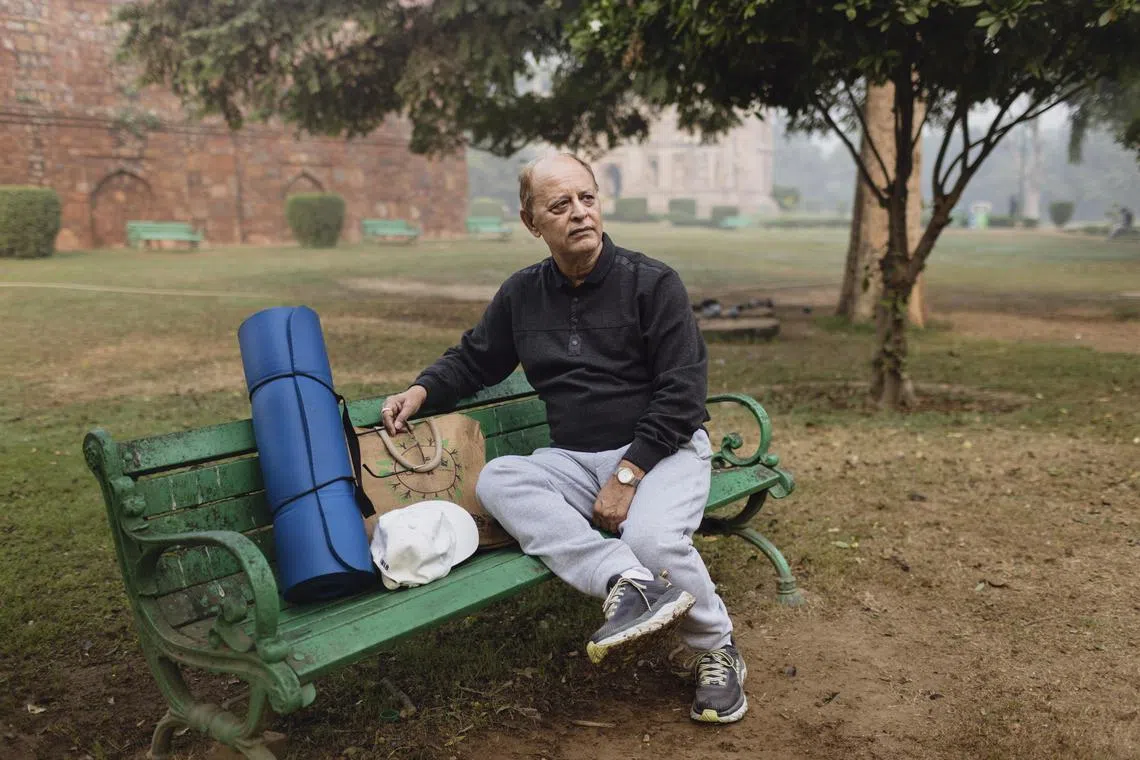Toxic air is no reason to stay inside for Delhi’s joggers and yoga fans
Sign up now: Get insights on Asia's fast-moving developments

People practising yoga in Lodhi Garden with smog lingering over India’s capital city, New Delhi.
PHOTO: NYTIMES
Follow topic:
NEW DELHI - A few steps into his early-morning run, Mr Purushottam Sahu struggled to breathe. He started coughing. He felt as if he might vomit.
Overhead, a thick brown-grey haze blanketed the sprawling forest park in New Delhi where he and other joggers, yoga enthusiasts and dog owners were keeping to their daily habits despite official warnings against exerting themselves in the toxic air.
“We are all jogging faster towards death,” said Mr Sahu, 46. “Because we have no other choice.”
Every year in late autumn
But for the region’s 30 million inhabitants, life must go on, and for many in this urban expanse of lush parks and morning strolls, that means trying to remain active.
For them, the calculation is that staying inside and skipping exercise – altering routines and forgoing the socialising that comes with them – is worse than going out and breathing poison.
Delhi’s skies began their annual descent into darkness more than a week ago, after farmers in neighbouring agrarian states started burning rice stubble.
The air pollution problem
Concentrations of cancer-causing micro-particles that enter the bloodstream through the lungs have soared in recent days to 30 times the danger limit set by the World Health Organisation.
Athletes in India for the Cricket World Cup have skipped practice sessions because of dense smog. In the past, cricket players have vomited during matches.
Walk through the streets of New Delhi and you can taste the air – a smoky metallic tang, as though you’ve licked ash.

In New Delhi, skipping exercise and the social routines that often come with it is seen as worse than going out and breathing poison.
PHOTO: NYTIMES
Public health experts say that strenuous exercise can mean deeper breathing and more particles inhaled into the lungs, making outdoor activity dangerous and sometimes even fatal, especially for older people and children.
Among the more vulnerable is Mr Sahu’s nine-year-old son, who follows him on his bicycle every morning.
Doctors say that the number of patients with breathing problems, coughs or watery and irritated eyes has tripled.
To prevent further crowding of the city’s already overburdened hospitals, the authorities have warned residents to avoid outdoor morning and evening walks, running, jogging or any other physical exercise outside.
“It is harmful and dangerous, particularly for elderly people who fill these parks,” said Dr Ullas Batra, an oncologist at the Rajiv Gandhi Cancer Institute and Research Centre in Delhi.
But hardly anyone listens, city park officials said.
Across the capital region, there are about 18,000 parks and gardens that attract hundreds of thousands of people every morning.
In interviews, around a dozen of them said they would prefer their morning exercise even as a widely used index of air quality, known as AQI, hovered around a “hazardous” 500, which is the highest measurement on the scale.
“We will be still running when AQI will be 1,000, and politicians will be blaming one another for failing to do anything,” said Mr Jaipal Tanwar, an organic farmer, who was walking with his wife Anita in the forest park known as Sanjay Van. “We are struggling to breathe now, and we will be choking at that time.”

Mr Jaipal Tanwar and his wife Anita in a park in New Delhi on Nov 7, 2023.
PHOTO: NYTIMES
For years, the city’s fitness enthusiasts have resisted any move by officials to scuttle their morning routine. During the coronavirus pandemic, the authorities deployed police officers as people continued to enter parks during a strict lockdown.
On a recent morning, India Gate, a war memorial built by the British, was invisible amid the plumes of toxic haze.
Spread around its flat grounds were colourful yoga mats. Older exercisers engaged in intense conversation on domestic politics while making the rounds, and dog owners wandered aimlessly with their headphones on.
At Lodhi Garden, a botanical sprawl in the heart of New Delhi that draws diplomats, government officials and the city’s wealthy residents, two groups led by trainers were practising yoga between coughing fits.
Out of 50 people seen practising yoga or jogging, only one wore a surgical mask. Many said they did not care about air pollution.
“Over the years, we have developed immunity against this dirty air,” said Mr Mahesh Arora, a retired government official, who has been going to Lodhi Garden for 40 years for morning workouts.
“We have to activate our body every day.”

Mr Mahesh Arora has been going to Lodhi Garden for 40 years for morning workouts.
PHOTO: NYTIMES
Mr Sahu, who was taking his morning run at Sanjay Van, said he had moved to the city for a job 15 years ago and now worked as a software engineer. His daughter has cerebral palsy and, when the city’s air is bad, goes outside only once a week. They live in a neighbourhood where rent is low and there are no trees.
That day, his son Dipesh soon felt fatigued as he cycled behind him. Within half an hour, they were both done.

Mr Sahu and his son Dipesh exercise at a park near their home in New Delhi.
PHOTO: NYTIMES
“Given a choice, I will pack my bags and leave this city without telling my friends,” Mr Sahu said. “We are stuck for giving good education to our children, without realising we are also killing them with poisonous air.”
But he does not use air purifiers at home, he said, saying they limit mobility. “It is like being in an intensive care unit,” he said. “You can’t live there.” NYTIMES

